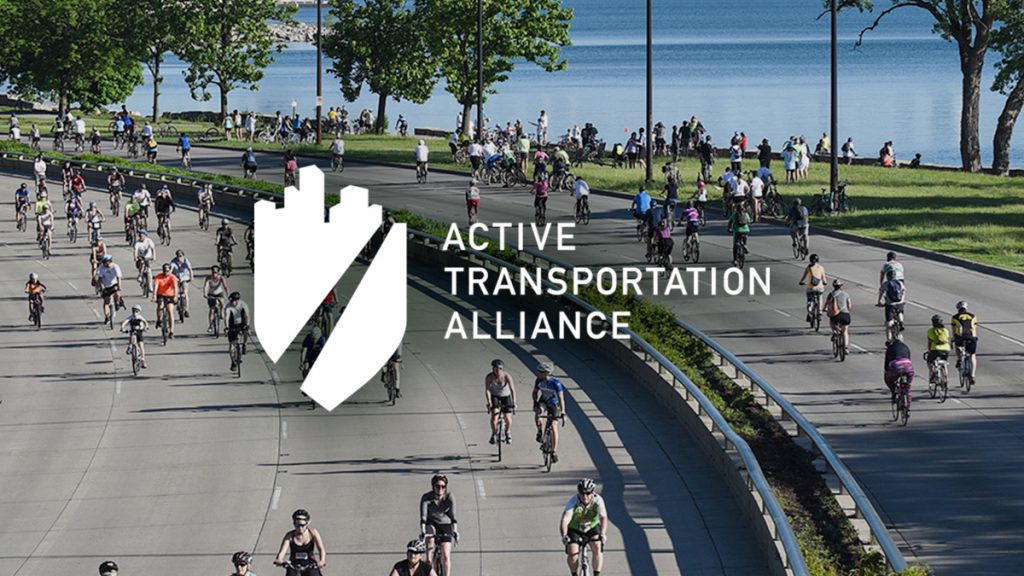NEWS RELEASE
Contacts:
Ethan Spotts, Active Transportation Alliance, 312.427.3325 x287 o, 312.919.1423 m, [email protected]
Mandy Burrell Booth, Metropolitan Planning Council, 312.863.6018 o 773.640.1206 m, [email protected]
Transportation and Community Development Advocates, Local Leaders Applaud Center-Running Bus Rapid Transit on Ashland Avenue
(CHICAGO) … The Chicago Dept. of Transportation (CDOT) and Chicago Transit Authority have announced their vision for center-running Bus Rapid Transit (BRT) service on Ashland Avenue, with the first phase of implementation planned between Cortland and 31st streets. Transportation and community development advocates and local leaders praised the plan as an important milestone in Chicago’s BRT vision that balances the needs of all street users, improves quality of life in local neighborhoods, provides better access to jobs and services, and makes local streets more attractive, safer and less congested.
The first phase of implementation is part of the city’s broader vision for BRT along Ashland Avenue between Irving Park Road and 95th Street. Learn more about the plan on CTA's web site: http://www.transitchicago.com/ashlandbrt/.
BRT service will make taking transit in the corridor faster, more reliable and more like taking the train. The first phase also will help connect transit riders to the Metra and the Blue, Green, Orange and Pink lines. While regular buses average 8.7 miles per hour on Ashland, the plan includes center-running bus-only lanes, full-service transit stations and high-tech traffic signals that could make the BRT service nearly as fast as the Red Line while largely avoiding street congestion.
"By reinventing the bus and rethinking our streets, BRT can bring dramatic improvements to public transit," said Ron Burke, Executive Director, Active Transportation Alliance. “BRT is an incredible opportunity to provide the kind of transportation options that Chicagoans need.” In fall 2012, more than 1,300 Chicagoans signed an Active Transportation Alliance petition asking city officials to include bus-only lanes and pedestrian-friendly streets as part of plans for world-class BRT on Western and/or Ashland avenues.
“Bus Rapid Transit will make transit service along Ashland faster and more reliable, which is a critical need for residents, businesses and institutions, such as hospitals and community centers,” said Peter Skosey, Executive Vice President, Metropolitan Planning Council. “Bus Rapid Transit also will help improve connections between existing transit stops along the route, helping people access more opportunities across the city, and has great potential to spark new development near stations.”
Three in 10 workers who live in the Western/Ashland corridor take transit to work, and one in four households don’t have a car.
“Bus Rapid Transit is an exciting transportation investment that will connect our residents and businesses in Pilsen to other neighborhoods and jobs. The connection of businesses to other neighborhoods will lead to greater economic vitality and sustainability. The connection of our residents to jobs through this investment will lead to greater community stability as our residents will now have an easier way to get to their jobs without having to relocate from this neighborhood,” said Maria Saldana, Chief Operating Officer, The Resurrection Project. “Improved public transportation is part of what is needed to stabilize the housing markets in our communities.”
“Bus Rapid Transit service on Ashland will improve connections between the four neighborhoods surrounding the University of Illinois-Chicago–Little Italy, University Village and Commons, Roosevelt Square and Brooks Homes, and Tri-Taylor – as well as to the rest of the neighborhoods along the route,” said Dennis O’Neill, Executive Director, Connecting4Communities. “Neighborhoods that are well connected to the fabric of our city are more apt to thrive, economically and socially.”
Active Transportation Alliance
The Active Transportation Alliance (Active Trans) is a non-profit advocacy organization supported by more than 7,000 members that works to improve conditions for biking, walking and transit in the Chicago region. Visit www.activetrans.org to learn more.
Metropolitan Planning Council
Since 1934, the Metropolitan Planning Council (MPC) has been dedicated to shaping a more sustainable and prosperous greater Chicago region. As an independent, nonprofit, nonpartisan organization, MPC serves communities and residents by developing, promoting and implementing solutions for sound regional growth. Visit www.metroplanning.org to learn more.

